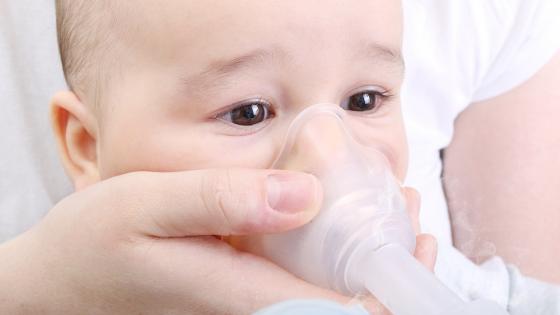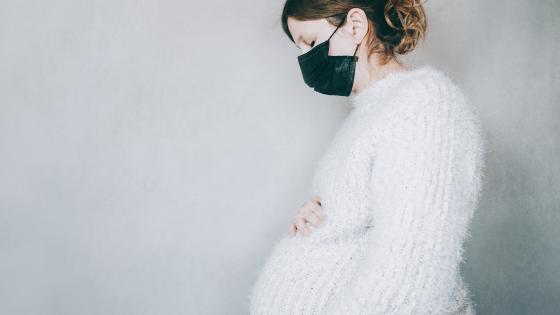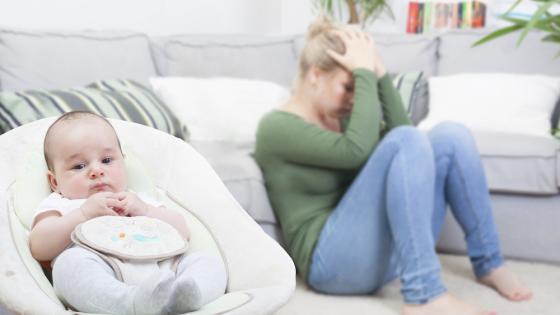The COVID-19 pandemic has reignited interest in understanding the societal costs of infectious diseases, which are often measured in terms of their direct and immediate impact on public health and economic activity (Adda 2016). While a large body of research focuses on the effects of pandemics on households and the economy (e.g. Janke et al. 2020, Moroni et al. 2020, Alon et al. 2020, Conti 2020, Baldwin 2020), the parallel question of how common endemic viruses impact society remains less understood. In addition, even less attention is paid to the potential long-term consequences of these viruses on population human capital and economic outcomes.
Respiratory disease: The role of birth order and the long-run impacts
In our paper (Daysal et al. 2021), we use Danish population-level administrative data on 35 birth cohorts to comprehensively analyse both the mechanisms through which infants become infected by respiratory viruses as well as the consequences of early-life respiratory disease exposure for their later outcomes.
We begin by documenting a striking disparity in the likelihood of severe respiratory disease in early childhood by birth order. Using data on all first- and second-born siblings born in Denmark between 1980 and 2015, we find that younger siblings have two-to-three-times higher rates of hospitalisation for respiratory conditions during their first year of life compared to the older siblings at the same age. This gap is particularly large when hospitalisations are measured in the first three months of life.
The hospitalisation disparity is larger if the younger sibling is born in the autumn or winter, when respiratory viruses circulate more frequently. The gap is also larger for siblings with shorter birth spacing, who may be more prone to close contact that facilitates virus transmission.
These patterns highlight the centrality of the family unit in virus transmission and the hitherto under-studied mechanism by which birth order might influence children’s longer-term outcomes: older children ‘bring home’ common viruses (e.g. from group childcare environments), putting their younger siblings at heightened risk of severe respiratory illness in the first few months of life.
Causal long-term effects
To identify the long-term causal impacts of early-life respiratory disease exposure, we combine the birth order variation in the likelihood of severe respiratory infection with variation in local disease prevalence. Local respiratory disease prevalence among children is largely driven by highly infectious conditions, such as the respiratory syncytial virus, or RSV, which spread across locations in irregular waves (Pitzer et al. 2015).
We construct a municipality-level index to capture respiratory disease exposure during each child’s first year of life from slightly older children in the community. Specifically, we calculate the number of hospitalisations for respiratory conditions per 100 children aged 13 to 71 months in each municipality (excluding siblings), and then assign to each child the cumulative child hospitalisation rate in their municipality over their first 12 months of life. We then use our sample of siblings to estimate the differential effect of the respiratory disease index for younger compared to older siblings.
Our regression models control for time-invariant differences across municipalities that might drive differences in disease exposure and aggregate and seasonal trends in respiratory illness, as well as a large set of observable individual and family characteristics.
We show that the local respiratory disease index strongly predicts the likelihood that a child is hospitalised for a respiratory illness during the first year of life. This impact is much larger for younger relative to older siblings. Moving from the 25th to the 75th percentile in the disease index distribution is associated with a 0.021 differential increase in the number of respiratory illness hospitalisations in the first year of life for younger relative to older children, representing an additional 30.9 % increase at the sample mean. This effect is in part driven by a differential increase in hospitalisations for RSV, which is a mild illness in most older children but can be serious among infants.
In the long run, the increased exposure to severe respiratory illness during infancy among second-born children translates into worse educational and labour market outcomes for them. We find that, for the younger siblings, moving from the 25th to the 75th percentile in the disease index distribution is associated with a 0.4 percentage point (0.5%) differential decline in the likelihood of high school graduation and a 1.3% additional reduction in earnings at age 30.
We also examine the impact of respiratory illness exposure in the first year of life on hospitalisations for respiratory conditions in later childhood. We find that higher respiratory disease exposure before age one is associated with a lower likelihood of hospitalisation for all respiratory conditions at ages three to four, consistent with the hypothesis of immunity formation.
We do not, however, observe a protective effect of first-year-of-life RSV exposure on the likelihood of RSV hospitalisation during later childhood. This result is consistent with RSV not being an immunising disease – that is, an RSV infection does not provide immunity against future illness. This lack of immunity formation, combined with the fact that RSV accounts for a large share of all respiratory hospitalisations during infancy (30% among second-born children), suggests that RSV might play a particularly important role in driving adverse long-term impacts on educational and economic outcomes.
Filling an important gap in the existing literature
Ample empirical evidence links adverse conditions, including health shocks, during early childhood to worse socioeconomic outcomes in the long run (Barker 1990, Currie 2008, Almond and Currie 2011, Almond et al. 2018). Consistent with this extensive literature, the current research on the effects of infectious viruses indicates long-lasting negative effects on health and economic outcomes.
However, these studies are primarily based on severe infectious diseases, such as malaria and polio (e.g. Bleakley 2010, Barreca 2010, Venkataramani 2012, Gensowski 2019, Fink et al. 2021), or on pandemic influenza outbreaks, including the 1918 Spanish Flu and the 1957 Asian Flu (e.g. Almond 2006, Almond and Mazumder 2005, Lin and Liu 2014, Kelly 2011). Severe infectious diseases like malaria and polio continue to plague the developing world but they have been largely eradicated in high-income countries.
Moreover, the evidence from pandemics may not apply to understanding the long-term impacts of endemic viruses to which individuals may be exposed many times during their lives. Studies from evolutionary biology highlight the importance of physiological adaptation (Bateson et al. 2014, Gluckman and Hanson 2006) and identify a high rate of immune-system learning in the first year of life (Holt and Jones 2000, M’Rabet et al. 2008, Cote et al. 2010). Thus, exposure to an infectious disease in infancy may increase immunity for an individual if they are exposed to the same virus at older ages, suggesting a potentially non-linear relationship between early-life exposure and long-term outcomes (Fink et al. 2021).
Emerging evidence on the long-term impacts of endemic influenza, on the other hand, has focused on the in utero period (Schwandt 2018). Our study contributes to this literature on endemic disease by focusing on the first year of life and analysing transmission mechanisms.
COVID-19 and the road ahead
Currently, the COVID-19 pandemic continues with no clear end in sight. While children have largely not been considered to be a high-risk group in terms of infection with the SARS-CoV-2 virus (Schwandt 2020), the pandemic may have lasting and dynamic impacts on children through its effects on other infectious diseases.
Policies implemented during the pandemic – including travel restrictions and school closures – have reduced the spread of other respiratory viruses, including RSV (Leung et al. 2020, Cowling et al, 2020). Epidemiological models predict that pandemic periods with muted spread of common infectious diseases are followed by stronger outbreaks (Baker et al. 2020).
Since the risk of severe cases of childhood disease is particularly high during the first year of life, the pandemic might have the severest long-term impact on infants who are born at the end of the pandemic and who are then exposed to stronger childhood disease outbreaks when the pandemic is over.
Overall, our study highlights the importance of the family unit in disease transmission during infancy and offers novel information that can inform cost-benefit evaluations of policies designed to curb the transmission of endemic viruses, including vaccination mandates, drug distribution programmes, and sick pay regulations (Bhalotra and Venkataramani 2015, White 2019, Pichler and Ziebarth 2020, Bütikofer and Salvanes 2020, Marie and Castello 2020).
References
Adda, J (2016), “Economic activity and the spread of viral diseases: Evidence from high frequency data”, Quarterly Journal of Economics 131(2): 891–941.
Almond, D (2006), “Is the 1918 influenza pandemic over? Long-term effects of in utero influenza exposure in the post-1940 US population”, Journal of Political Economy 114(4): 672–712.
Almond, D, and J Currie (2011), “Human capital development before age five”, in Handbook of Labor Economics, Vol. 4, Elsevier, 1315–486.
Almond, D, J Currie and V Duque (2018), “Childhood circumstances and adult outcomes: Act II”, Journal of Economic Literature 56(4): 1360–446.
Almond, D, and B Mazumder (2005), “The 1918 influenza pandemic and subsequent health outcomes: an analysis of SIPP data”, American Economic Review 95(2): 258–62.
Alon, T, M Doepke, J Olmstead-Rumsey and M Tertilt (2020), “The impact of the coronavirus pandemic on gender equality”, VoxEU.org, 19 April.
Baldwin, R (2020), “The COVID-19 upheaval scenario: Inequality and pandemic make an explosive mix”, VoxEU.org, 15 March.
Baker, R E, S W Park, W Yang, G A Vecchi, C Jessica E Metcalf and B T Grenfell (2020), “The impact of COVID-19 nonpharmaceutical interventions on the future dynamics of endemic infections”, Proceedings of the National Academy of Sciences 117(48): 30547–53.
Barker, D J (1990), “The fetal and infant origins of adult disease”, BMJ: British Medical Journal 301(6761): 1111.
Barreca, A I (2010), “The long-term economic impact of in utero and postnatal exposure to malaria”, Journal of Human Resources 45(4): 865–92.
Bateson, P, P Gluckman and M Hanson (2014), “The biology of developmental plasticity and the predictive adaptive response hypothesis”, Journal of Physiology 592(11): 2357–68.
Bhalotra, S R, and A Venkataramani (2015), “Shadows of the captain of the men of death: Early life health interventions, human capital investments, and institutions”, Human Capital Investments, and Institutions, 8 August.
Bleakley, H (2010), “Malaria eradication in the Americas: A retrospective analysis of childhood exposure”, American Economic Journal: Applied Economics 2(2): 1–45.
Bütikofer, A, and K G Salvanes (2020), “Disease control and inequality reduction: Evidence from a tuberculosis testing and vaccination campaign”, Review of Economic Studies 87(5): 2087–125.
Conti, G (2020), “Supporting parents and children in the early years during (and after) the COVID-19 crisis”, VoxEU.org, 1 May.
Côté, S M, A Petitclerc, M-F Raynault, Q Xu, B Falissard, M Boivin and R E Tremblay (2010), “Short-and long-term risk of infections as a function of group child care attendance: An 8-year population-based study”, Archives of Pediatrics and Adolescent Medicine 164(12): 1132–37.
Cowling, B J, S T Ali, T W Y Ng et al. (2020), “Impact assessment of non-pharmaceutical interventions against coronavirus disease 2019 and influenza in Hong Kong: an observational study”, Lancet Public Health 5(5): e279–e288.
Currie, J (2008) “Children’s health and later life outcomes”, VoxTalk, 1 August.
Daysal, N M, H Ding, M Rossin-Slater and H Schwandt (2021), “Germs in the family: The long-term consequences of intra-household endemic respiratory disease spread”, NBER Working Paper 29524.
Fink, G, A S Venkataramani and A Zanolini (2021), “Early life adversity, biological adaptation, and human capital: evidence from an interrupted malaria control programme in Zambia”, Journal of Health Economics 80: 102532.
Gensowski, M, T H Nielsen, N M Nielsen, M Rossin-Slater and M Wüst (2019), “Childhood health shocks, comparative advantage, and long term outcomes: Evidence from the last Danish polio epidemic”, Journal of Health Economics 66: 27–36.
Gluckman, P, and M Hanson (2006), Mismatch: Why our world no longer fits our bodies, Oxford University Press.
Holt, P G, and C A Jones (2000), “The development of the immune system during pregnancy and early life”, Allergy 55(8): 688–97.
Janke, K, K Lee, C Propper, K Shields and M A Shields (2020), “The impact of COVID-19 on chronic health in the UK”, VoxEU.org, 13 April.
Kelly, E (2011), “The scourge of Asian flu in utero exposure to pandemic influenza and the development of a cohort of British children”, Journal of Human Resources 46(4): 669–94.
Leung, N H L, D K W Chu, E Y C Shiu, K-H Chan, J J McDevitt, B J P Hau, H-L Yen, Y Li, D K M Ip, J S M Peiris et al. (2020), “Respiratory virus shedding in exhaled breath and efficacy of face masks”, Nature Medicine 26(5): 676–80.
Lin, M-J, and E M Liu (2014), “Does in utero exposure to illness matter? The 1918 influenza epidemic in Taiwan as a natural experiment”, Journal of Health Economics 37: 152–63.
M’Rabet, L, A P Vos, G Boehm and J Garssen (2008), “Breastfeeding and its role in early development of the immune system in infants: consequences for health later in life”, The Journal of Nutrition 138(9): 1782S–1790S.
Marie, O, and J V Castello (2020), “Sick leave generosity and (unhealthy) returns to work”, VoxEU.org, 28 July.
Moroni, G, C Nicoletti and E Tominey (2020), “Children’s socio-emotional skills and the home environment during the COVID-19 crisis”, VoxEU.org, 19 April.
Pichler, S, and N R Ziebarth (2020), “Labor market effects of US sick pay mandates”, Journal of Human Resources 55(2): 611–59.
Pitzer, V E, C Viboud, W J Alonso, T Wilcox, C J Metcalf, C A Steiner, A K Haynes and B T Grenfell (2015), “Environmental drivers of the spatiotemporal dynamics of respiratory syncytial virus in the US”, PLoS Pathogens 11(1): e1004591.
Schwandt, H (2018), “The lasting legacy of seasonal influenza: In-utero exposure and labor market outcomes”, CEPR Discussion Paper DP12563.
Schwandt, H (2020), “Pregnancy during the pandemic”, VoxEU.org, 2 June.
Venkataramani, A S (2012), “Early life exposure to malaria and cognition in adulthood: evidence from Mexico”, Journal of Health Economics 31(5): 767–80.
White, C (2019), “Measuring social and externality benefits of influenza vaccination”, Journal of Human Resources, 1118–9893R2.







